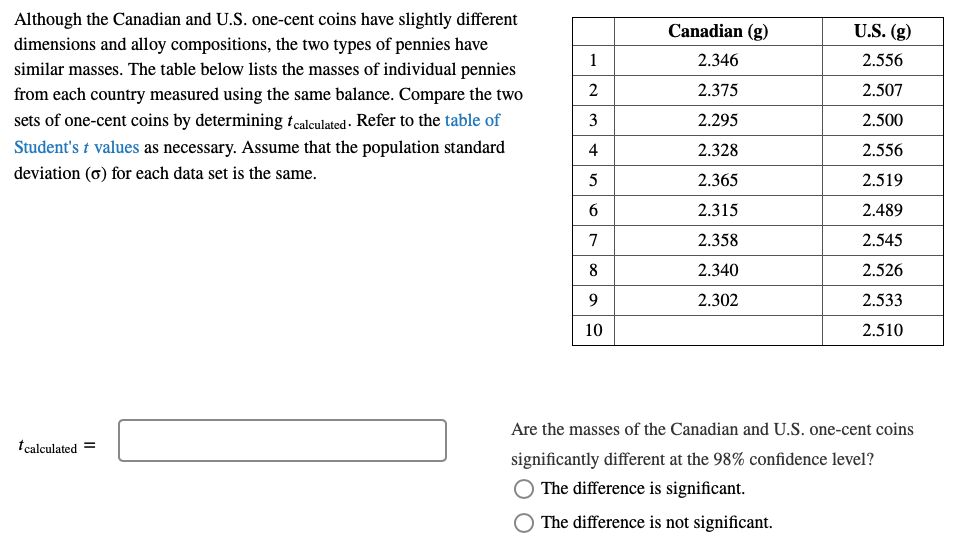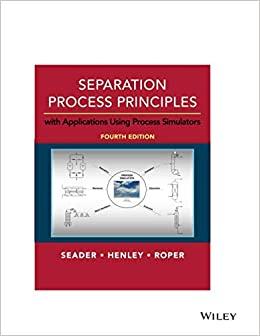Answered step by step
Verified Expert Solution
Question
1 Approved Answer
ANALYTICAL CHEM Just looking for the answers so I can match with mine. I got 16.3 for part 1. U.S. (g) 1 Canadian (g) 2.346
ANALYTICAL CHEM


Just looking for the answers so I can match with mine.
I got 16.3 for part 1.
U.S. (g) 1 Canadian (g) 2.346 2.375 2.556 N Although the Canadian and U.S. one-cent coins have slightly different dimensions and alloy compositions, the two types of pennies have similar masses. The table below lists the masses of individual pennies from each country measured using the same balance. Compare the two sets of one-cent coins by determining tcalculated . Refer to the table of Student's t values as necessary. Assume that the population standard deviation () for each data set is the same. 2.507 3 2.295 2.500 4 2.328 2.556 5 2.519 2.365 2.315 6 6 2.489 7 2.358 2.545 8 2.340 2.526 9 2.302 2.533 10 2.510 t calculated = Are the masses of the Canadian and U.S. one-cent coins significantly different at the 98% confidence level? The difference is significant. The difference is not significant. Suppose the number of replicate measurements and the average mass of an individual penny remain the same, but the standard deviation of each data set is three times greater than its original value. Calculate the t value to compare these two data sets. t calculated = For the second set of measurements, is there a significant difference in the masses of the two types of coins at the 98% confidence level? The difference is not significant. The difference is significantStep by Step Solution
There are 3 Steps involved in it
Step: 1

Get Instant Access to Expert-Tailored Solutions
See step-by-step solutions with expert insights and AI powered tools for academic success
Step: 2

Step: 3

Ace Your Homework with AI
Get the answers you need in no time with our AI-driven, step-by-step assistance
Get Started


